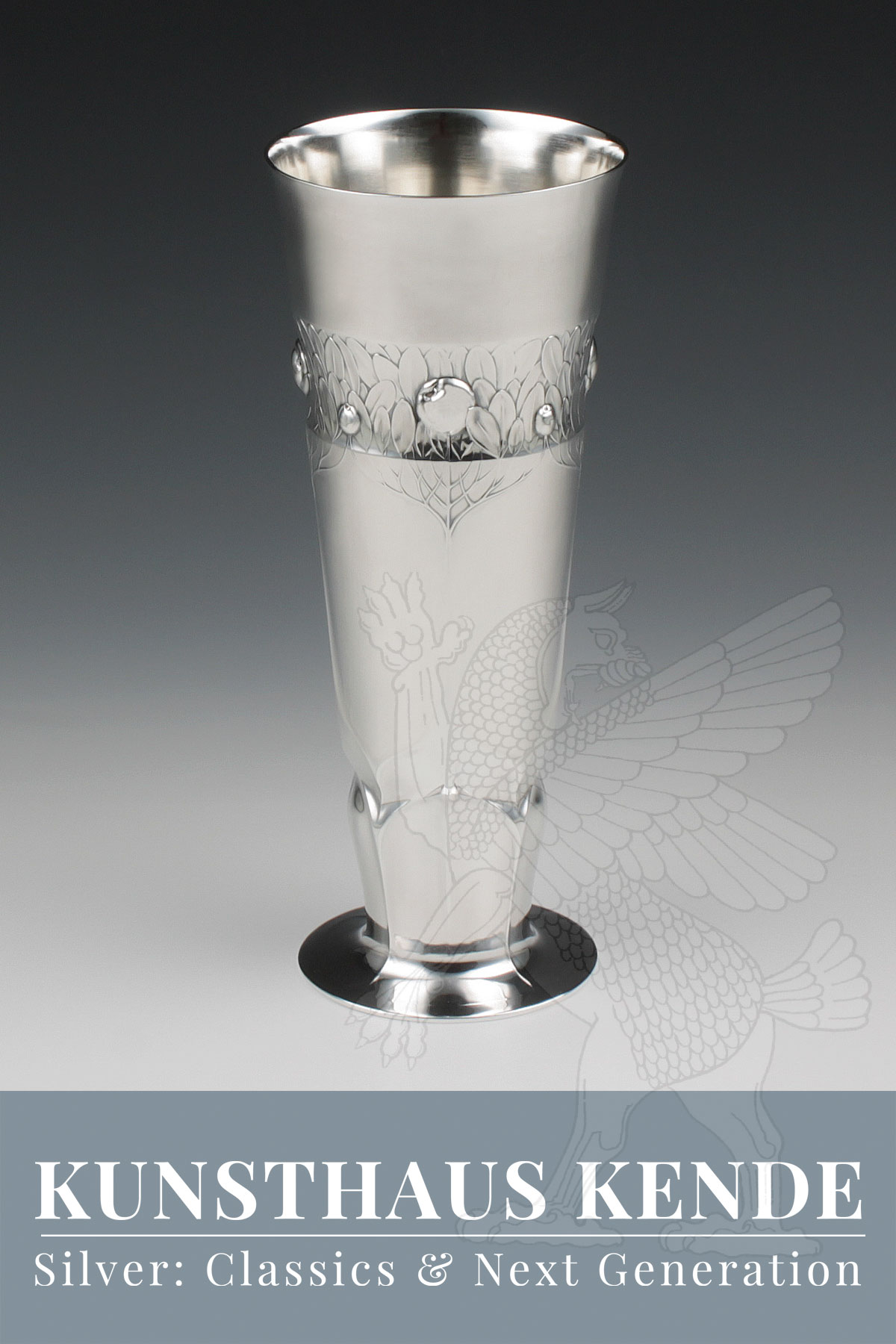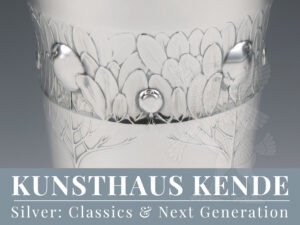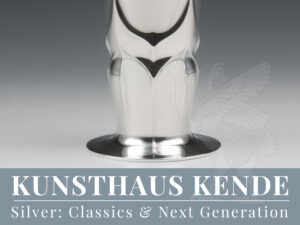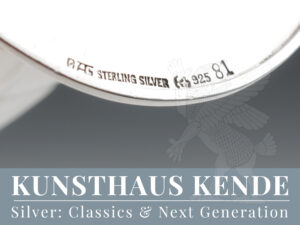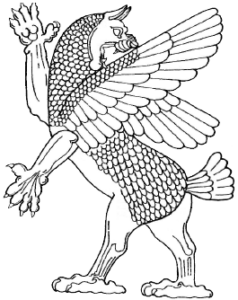Item number: 58371
An Art Nouveau sterling silver vase #81,
Cologne circa 1900 by Orivit
On a flat plate base, the body widening towards the upper rim and adorned with vertical folds, ornamentally curved sections and foliage in relief in the form of pomegranate branches. Elegant work of the Art Nouveau in sterling silver, which shows a clear proximity to the formal language of Henry van de Velde. Very good, undamaged condition.
24.3 cm / 9.56″ tall, 10 cm / 3.93″ diameter (upper rim), 8.7 cm / 3.42″ diameter (base); 506.2 g / 17.85 oz
Comparable objects by Orivit in pewter, Britannia silver and silver are in the possession of the Bröhan Museum, Berlin, among others, and are illustrated in: Dedo von Kerssenbrock-Krosigk (ed.): Metallkunst der Moderne (Bestandskataloge des Bröhan-Museums VI) [Metal art of the modern age (stock catalogues of the Bröhan Museum VI)], Berlin 2001. P. 234 – 255.
A coffee tea service with tray by Orivit in silver with comparable ornamentation is also in the possession of the Rijksmuseum, Amsterdam (see here).
The rise and decline of the Orivit silverware factory
Orivit became famous in the late 19th century for its very sophisticated and decorative works in Art Nouveau style, which were mainly produced in pewter and Britannia silver and far less frequently in silver.
In 1894, the entrepreneur Ferdinand Hubert Schmitz (1863 – 1939) took over the “Rheinische Bronce- und Metallwarenfabrik Johann Heinrich Welke” [The Rhenish Bronze and Metalware Factory Johann Heinrich Welke], from which ORIVIT AG emerged in 1898. Orivit’s works, which were of high aesthetic quality, were awarded a gold medal at the World Exhibition in Paris in 1900 and were received with great enthusiasm by contemporary art critics, which in turn boosted the company’s foreign business. However, large-scale investments in technical innovations, which led to large rival companies such as WMF, Osiris and Kayserzinn seeing Orivit as a growing threat, led to economic difficulties for Orivit, so that the company became insolvent and was taken over by WMF in 1905. Although objects in silver were produced by Orivit in much smaller numbers anyway, production in silver ceased completely immediately after WMF took over.
The special artistic feature of Orivit’s work is in the skilful combination of Belgian, French stylistic tendencies of Art Nouveau with those of German Jugendstil.
